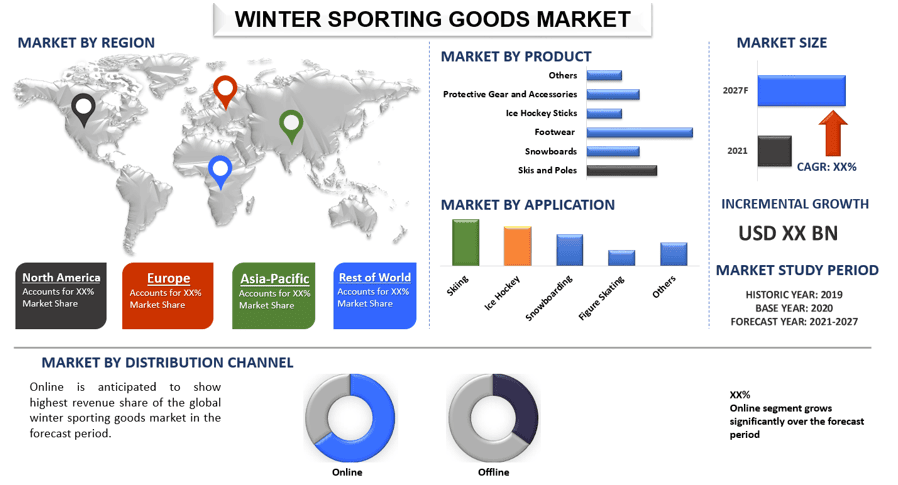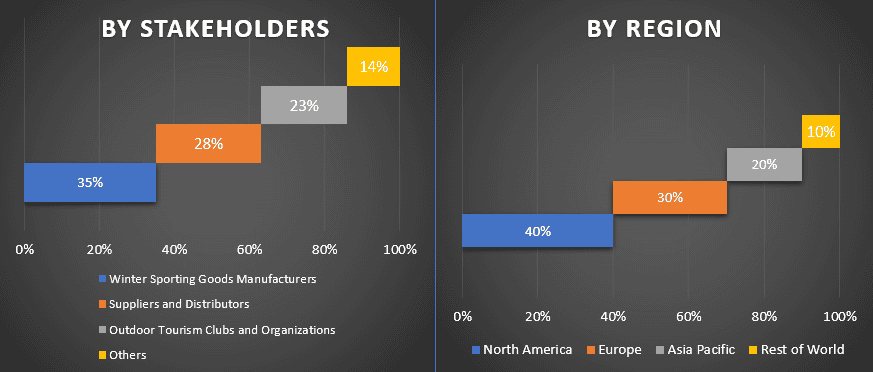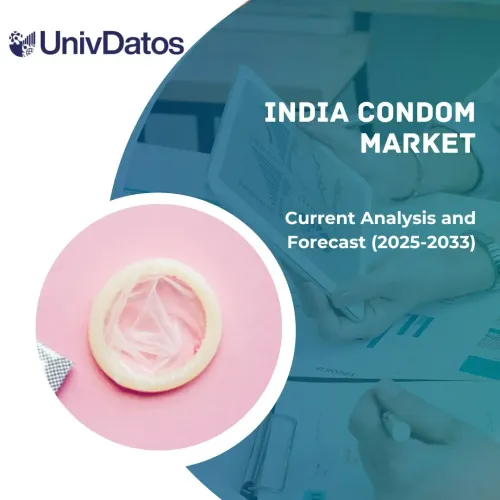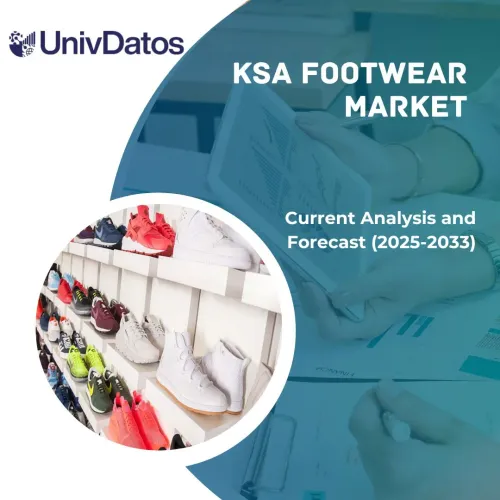- Inicio
- Acerca de nosotros
- Industria
- Servicios
- Leyendo
- Contáctenos
Mercado de Artículos Deportivos de Invierno: Análisis Actual y Pronóstico (2021-2027)
Énfasis en Producto (Esquíes y Bastones, Tablas de Snowboard, Calzado, Palos de Hockey sobre Hielo, Equipos de Protección y Accesorios, Otros); Aplicación (Esquí, Hockey sobre Hielo, Snowboard, Patinaje Artístico, otros); Canal de Distribución (Online y Offline); Región/País

SOLICITAR MUESTRA GRATUITA EN PDF
Se espera que el Mercado de Artículos Deportivos de Invierno crezca a una Tasa de Crecimiento Anual Compuesto (CAGR) de alrededor del 3% durante el período de pronóstico (2021-2027).El Mercado de Artículos Deportivos de Invierno está impulsado principalmente por factores como la creciente popularidad de los deportes de invierno en las economías en desarrollo y el aumento del número de participantes en deportes de invierno tanto de economías avanzadas como emergentes.
La creciente popularidad de las actividades al aire libre, incluidos los deportes de nieve entre los consumidores, debido a la creciente conciencia sobre los beneficios mentales y físicos de estos deportes, está impulsando la demanda de artículos deportivos de invierno, lo que respalda el crecimiento de este mercado. El creciente interés de los consumidores en los deportes basados en la naturaleza que ofrecen ocio, así como competitividad, ha estado promoviendo la demanda de productos de deportes de invierno, incluidos trineos y tubos. Los entusiastas de los deportes en las economías avanzadas se están enfocando en convertir los deportes de invierno en una profesión principal, lo que actúa como un factor vital que escala el crecimiento del mercado.
Algunos de los principales actores que operan en el mercado incluyen Tube Pro, Inc., Airhead Sports Group, L.L. Bean, Agit Global, Inc., Emsco Group, Slippery Racer, Franklin Sports Inc., Gizmo Riders, Surf 9 LLC, Zipfy, etc. Varias fusiones y adquisiciones junto con asociaciones han sido emprendidas por estos actores para impulsar su presencia en diferentes regiones.
Información Presentada en el Informe
“Entre Productos, el segmento de Calzado dominó el mercado en 2020”
Según el Producto, el mercado se segmenta en Esquíes y Bastones, Tablas de Snowboard, Calzado, Palos de Hockey sobre Hielo, Equipos de Protección y Accesorios y Otros. De los diferentes segmentos de productos, el segmento de calzado lidera el mercado global, representando más de la mitad de la cuota de mercado total en 2020. Los avances tecnológicos han dado lugar a innovaciones en equipos portátiles. Los equipos inteligentes, como las plantillas que actúan como instructor de esquí personal y los textiles que regulan la temperatura corporal, están dictando la escena de las nuevas empresas, así como los lanzamientos de productos en el ámbito del esquí.
“Entre Aplicaciones, el segmento de Esquí dominó el mercado en 2020.”
Según la Aplicación, el Mercado de Artículos Deportivos de Invierno se segmenta en Esquí, Hockey sobre Hielo, Snowboard, Patinaje Artístico y Otros. El segmento de Esquí contribuyó con el máximo mercado al Mercado de Artículos Deportivos de Invierno. La creciente preocupación entre los consumidores por un estilo de vida saludable, junto con la creciente aceptación de diversas actividades deportivas de invierno, como el esquí, el snowboard, el esquí de fondo, el trineo y el patinaje sobre hielo, especialmente en países con clima frío como Estados Unidos, Canadá, Alemania, Suecia, Francia y Austria, ha aumentado la popularidad de los deportes de invierno.
“Entre Canal de Distribución, el segmento Online tiene una cuota de mercado significativa en 2020.”
Según el Canal de Distribución, el Mercado de Artículos Deportivos de Invierno se segmenta en Online y Offline. El segmento Online tiene la mayor cuota en el Mercado de Artículos Deportivos de Invierno. La creciente popularidad de las plataformas de comercio electrónico y la creciente preferencia por las compras online han obligado a los fabricantes a depender de la distribución online para una mejor visibilidad y un alcance más amplio de los consumidores. Varios fabricantes se están centrando cada vez más en la implementación del enfoque directo al consumidor para generar más ventas a través de sus plataformas de venta minorista online.
“Norteamérica representa el mercado más grande.”
Para una mejor comprensión de la adopción en el mercado de Artículos Deportivos de Invierno, el mercado se analiza para países como Norteamérica (EE. UU., Canadá, Resto de Norteamérica), Europa (Alemania, Reino Unido, Francia, Italia, España, Resto de Europa), Asia-Pacífico (China, Japón, India, Australia, Resto de Asia-Pacífico) y Resto del Mundo. Norteamérica dominó el mercado en 2020. Norteamérica domina el mercado de equipos de deportes de invierno debido a la presencia de varios entusiastas de los deportes y un número creciente de participantes en deportes de invierno. Los entusiastas de los deportes en las economías avanzadas se están enfocando en convertir los deportes de invierno en una profesión principal, lo que actúa como un factor vital que escala el crecimiento del mercado. Esto está impulsando masivamente las ventas de artículos deportivos y ayudando al mercado a crecer orgánicamente sin ningún impulso importante.
Razones para comprar este informe:
- El estudio incluye análisis de dimensionamiento y pronóstico del mercado validados por expertos clave de la industria autenticados
- El informe presenta una revisión rápida del rendimiento general de la industria de un vistazo
- El informe cubre un análisis en profundidad de los principales pares de la industria con un enfoque principal en las finanzas comerciales clave, la cartera de productos, las estrategias de expansión y los desarrollos recientes
- Examen detallado de los impulsores, restricciones, tendencias clave y oportunidades que prevalecen en la industria
- El estudio cubre exhaustivamente el mercado en diferentes segmentos
- Análisis regional y a nivel de país en profundidad de la industria
Opciones de personalización:
El Mercado de Artículos Deportivos de Invierno se puede personalizar aún más según el requisito o cualquier otro segmento de mercado. Además de esto, UMI entiende que puede tener sus propias necesidades comerciales, por lo tanto, no dude en conectarse con nosotros para obtener un informe que se adapte completamente a sus requisitos.
Tabla de contenido
El análisis del mercado histórico, la estimación del mercado actual y el pronóstico del futuro del Mercado de Artículos Deportivos de Invierno fueron los tres pasos principales realizados para crear y analizar la adopción de Artículos Deportivos de Invierno en varias regiones del mundo. Se llevó a cabo una exhaustiva investigación secundaria para recopilar los números históricos del mercado y estimar el tamaño actual del mercado. En segundo lugar, para validar estos conocimientos, se tomaron en consideración numerosos hallazgos y suposiciones. Además, se realizaron exhaustivas entrevistas primarias con expertos de la industria en toda la cadena de valor de la industria. Después de la asunción y validación de los números del mercado a través de entrevistas primarias, empleamos un enfoque de arriba hacia abajo/abajo hacia arriba para pronosticar el tamaño completo del mercado. Posteriormente, se adoptaron métodos de desglose del mercado y triangulación de datos para estimar y analizar el tamaño del mercado de segmentos y subsegmentos a los que pertenece la industria. La metodología detallada se explica a continuación.
Buscar Más Detalles Sobre la Metodología de Investigación
Análisis del Tamaño Histórico del Mercado
Paso 1: Estudio Profundo de Fuentes Secundarias:
Se realizó un estudio secundario detallado para obtener el tamaño histórico del mercado de Artículos Deportivos de Invierno a través de fuentes internas de la empresa, comoinformes anuales y estados financieros, presentaciones a inversores, comunicados de prensa, etc.,y fuentes externas que incluyenrevistas, noticias y artículos, publicaciones gubernamentales, publicaciones de la competencia, informes del sector, bases de datos de terceros y otras publicaciones creíbles.
Paso 2: Segmentación del Mercado:
Después de obtener el tamaño histórico del mercado de Artículos Deportivos de Invierno, realizamos un análisis secundario detallado para recopilar información histórica del mercado y la cuota de diferentes segmentos y subsegmentos para las principales regiones. Los principales segmentos incluidos en el informe son por producto, aplicación y canal de distribución. Además, se realizaron análisis regionales y a nivel de país para evaluar la adopción general del Mercado de Artículos Deportivos de Invierno en el contexto global.
Paso 3: Análisis de Factores:
Después de adquirir el tamaño histórico del mercado de diferentes segmentos y subsegmentos, realizamos unanálisis de factoresdetallado para estimar el tamaño actual del mercado. Además, realizamos un análisis de factores utilizando variables dependientes e independientes, como la creciente popularidad de los deportes de invierno en las economías en desarrollo y el aumento del número de participantes en deportes de invierno tanto de economías avanzadas como emergentes. Se analizaron las tendencias históricas y su impacto interanual en el tamaño y la cuota del mercado. También se estudió a fondo el escenario de la oferta y la demanda.
Estimación y Pronóstico del Tamaño Actual del Mercado
Dimensionamiento del Mercado Actual:Basándonos en la información útil de los 3 pasos anteriores, llegamos al tamaño actual del mercado, los actores clave del mercado y las cuotas de mercado de los segmentos y la empresa. Todas las divisiones de porcentaje requeridas y los desgloses del mercado se determinaron utilizando el enfoque secundario antes mencionado y se verificaron a través de entrevistas primarias.
Estimación y Pronóstico:Para la estimación y el pronóstico del mercado, se asignaron ponderaciones a diferentes factores, incluidos los impulsores y tendencias, las restricciones y las oportunidades disponibles para las partes interesadas. Después de analizar estos factores, se aplicaron técnicas de pronóstico relevantes, es decir, el enfoque de arriba hacia abajo/abajo hacia arriba, para llegar al pronóstico del mercado hasta 2027 para diferentes segmentos y subsegmentos en las principales regiones a nivel mundial. La metodología de investigación adoptada para estimar el tamaño del mercado abarca:
- El tamaño del mercado de la industria, en términos de valor (USD)
- Todas las cuotas porcentuales, divisiones y desgloses de segmentos y subsegmentos del mercado
- Actores clave en el mercado de artículos deportivos de invierno en términos de productos y servicios ofrecidos. Además, las estrategias de crecimiento adoptadas por estos actores para competir en el mercado de rápido crecimiento.
Validación del tamaño y la cuota de mercado
Investigación primaria:Se realizaron entrevistas en profundidad con los líderes de opinión clave (KOL), incluidos los ejecutivos de alto nivel (CXO/VP, Jefe de Ventas, Jefe de Marketing, Jefe de Operaciones y Jefe Regional, Jefe de País, etc.) en los principales países. Los hallazgos de la investigación primaria se resumieron y se realizó un análisis estadístico para probar la hipótesis establecida. Los datos de la investigación primaria se consolidaron con los hallazgos secundarios, convirtiendo así la información en conocimientos prácticos.
División de participantes primarios en diferentes regiones

Ingeniería de mercado
Se empleó la técnica de triangulación de datos para completar la estimación general del mercado y llegar a cifras estadísticas precisas de cada segmento y subsegmento del mercado de artículos deportivos de invierno. Los datos se dividieron en varios segmentos y subsegmentos después de estudiar varios parámetros y tendencias en las áreas de producto, aplicación y canal de distribución para el principal país/región a nivel mundial.
El objetivo principal del estudio de mercado de artículos deportivos de invierno
Las tendencias actuales y futuras del mercado de artículos deportivos de invierno se identificaron en el estudio. Los inversores pueden obtener información estratégica para basar su discreción para las inversiones a partir del análisis cualitativo y cuantitativo realizado en el estudio. Las tendencias actuales y futuras del mercado determinarían el atractivo general del mercado a nivel regional y nacional, proporcionando una plataforma para que el participante industrial explote el mercado sin explotar para beneficiarse como una ventaja de primer movimiento. Otros objetivos cuantitativos de los estudios incluyen:
- Analizar el tamaño actual y previsto del mercado de artículos deportivos de invierno en términos de valor (US$). Además, analizar el tamaño actual y previsto del mercado de diferentes segmentos y subsegmentos
- Los segmentos en el estudio incluyen producto, aplicación y canal de distribución
- Analizar el tamaño actual y previsto del mercado de artículos deportivos de invierno para las principales regiones y países
- Las principales regiones estudiadas en el informe incluyen América del Norte (Estados Unidos, Canadá, Resto de América del Norte), Europa (Alemania, Reino Unido, Francia, Italia, España, Resto de Europa), Asia Pacífico (China, Japón, India, Australia, Resto de Asia Pacífico) y Resto del Mundo
- Perfiles de empresas de los actores del mercado de artículos deportivos de invierno y las estrategias de crecimiento adoptadas por ellos para mantenerse en el mercado de rápido crecimiento
- Análisis en profundidad a nivel regional y nacional de la industria
Relacionados Informes
Los clientes que compraron este artículo también compraron










